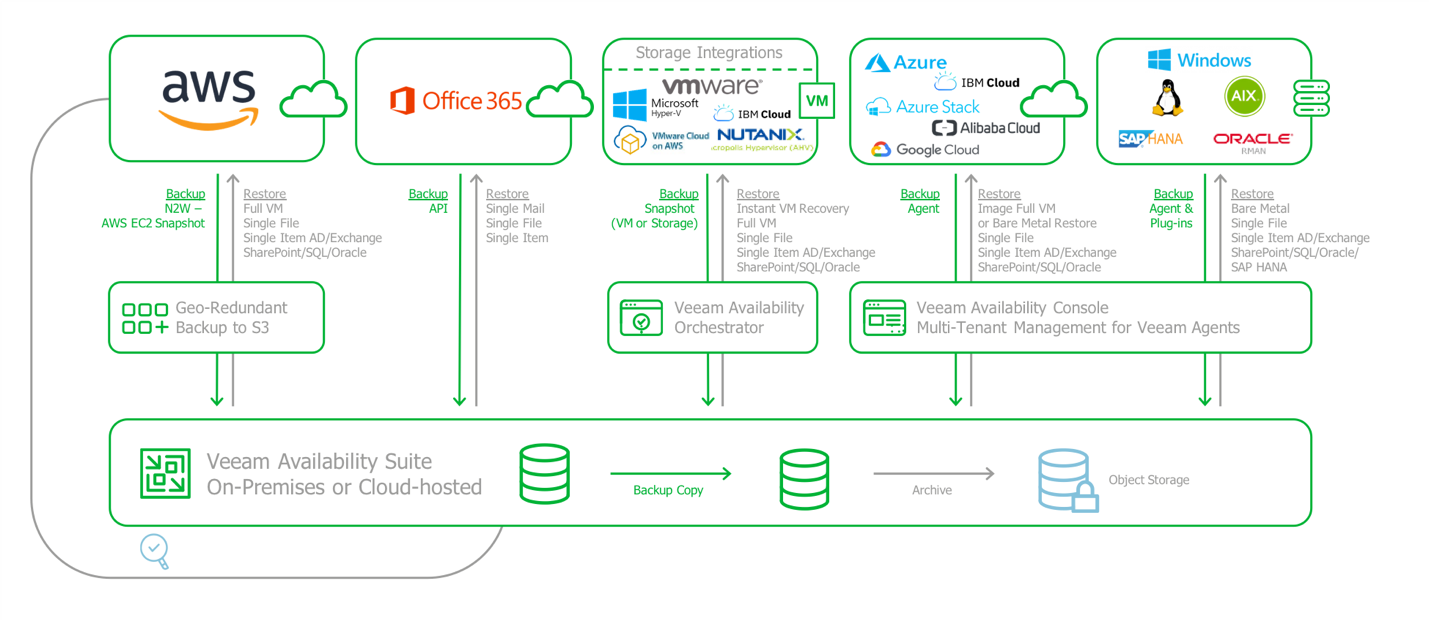With the infrastructure world in constant flux, more and more businesses are adopting a multi-cloud deployment model. The challenges from this are becoming more complex and, in some cases, cumbersome. Consider the impact on the data alone. 10 years ago, all anyone worried about was if the SAN would stay up, and if it didn’t, would their data be protected. Fast forward to today, even a small business can have data scattered across the globe. Maybe they have a few vSphere hosts in an HQ, with branch offices using workloads running in the cloud or Software as a Service-based applications. Maybe backups are stored in an object storage repository (somewhere — but only one guy knows where). This is happening in the smallest of businesses, so as a business grows and scales, the challenges become even more complex.
Potential pitfalls
Now this blog is not about how Veeam manages data in a multi-cloud world, it’s more about how to understand the challenges and the potential pitfalls. Take a look at the diagram below:
Veeam supports a number of public clouds and different platforms. This is a typical scenario in a modern business. Picture the scene: workloads are running on top of a hypervisor like VMware vSphere or Nutanix, with some services running in AWS. The company is leveraging Microsoft Office 365 for its email services (people rarely build Exchange environments anymore) with Active Directory extended into Azure. Throw in some SAP or Oracle workloads, and your data management solution has just gone from “I back up my SAN every night to tape” to “where is my data now, and how do I restore it in the event of a failure?” If worrying about business continuity didn’t keep you awake 10 years ago, it surely does now. This is the impact of modern life. The more agility we provide on the front end for an IT consumer, the more complexity there has to be on the back end.
With the ever-growing complexity, global reach and scale of public clouds, as well as a more hands-off approach from IT admins, this is a real challenge to protect a business, not only from an outage, but from a full-scale business failure.
Managing a multi-cloud environment
When looking to manage a multi-cloud environment, it is important to understand these complexities, and how to avoid costly mistakes. The simplistic approach to any environment, whether it is running on premises or in the cloud, is to consider all the options. Sounds obvious, but that has not always been the case. Where or how you deploy a workload is becoming irrelevant, but how you protect that workload still is. Think about the public cloud: if you deploy a virtual machine, and set the firewall ports to any:any, (that would never happen would it?), you can be pretty sure someone will gain access to that virtual machine at some point. Making sure that workload is protected and recoverable is critical in this instance. The same considerations and requirements always apply whether running on premises or off premises. How do you protect the data and how do you recover the data in the event of a failure or security breach?
What to consider when choosing a cloud platform?
This is something often overlooked, but it has become clear in recent years that organizations do not choose a cloud platform for single, specific reasons like cost savings, higher performance and quicker service times, but rather because the cloud is the right platform for a specific application. Sure, individual reason benefits may come into play, but you should always question the “why” on any platform selection.
When you’re looking at data management platforms, consider not only what your environment looks like today, but also what will it look like tomorrow. Does the platform you’re purchasing today have a roadmap for the future? If you can see that the company has a clear vision and understanding of what is happening in the industry, then you can feel safe trusting that platform to manage your data anywhere in the world, on any platform. If a roadmap is not forthcoming, or they just don’t get the vision you are sharing about your own environment, perhaps it’s time to look at other vendors. It’s definitely something to think about next time you’re choosing a data management solution or platform.
The post Considerations in a multi-cloud world appeared first on Veeam Software Official Blog.
